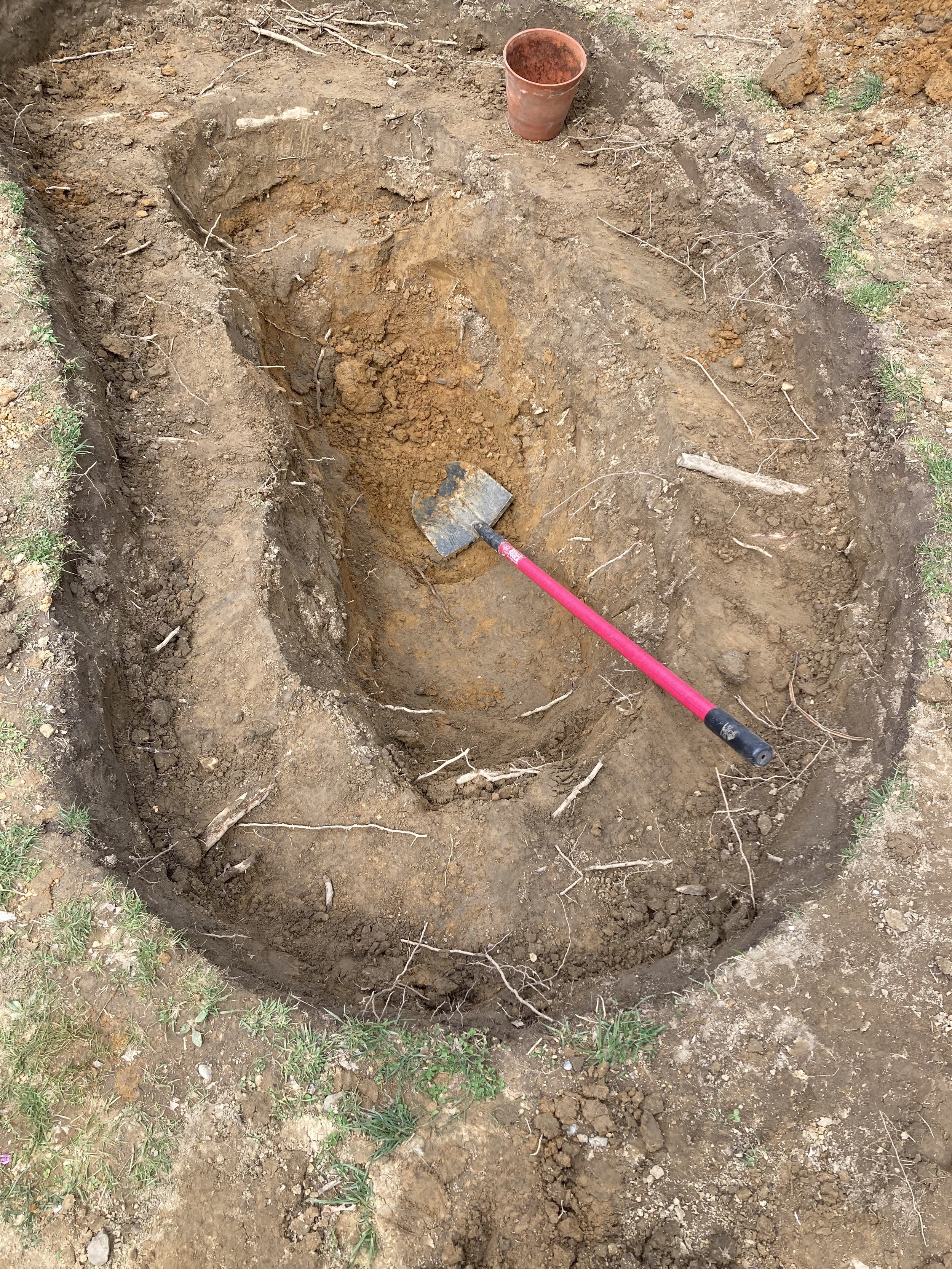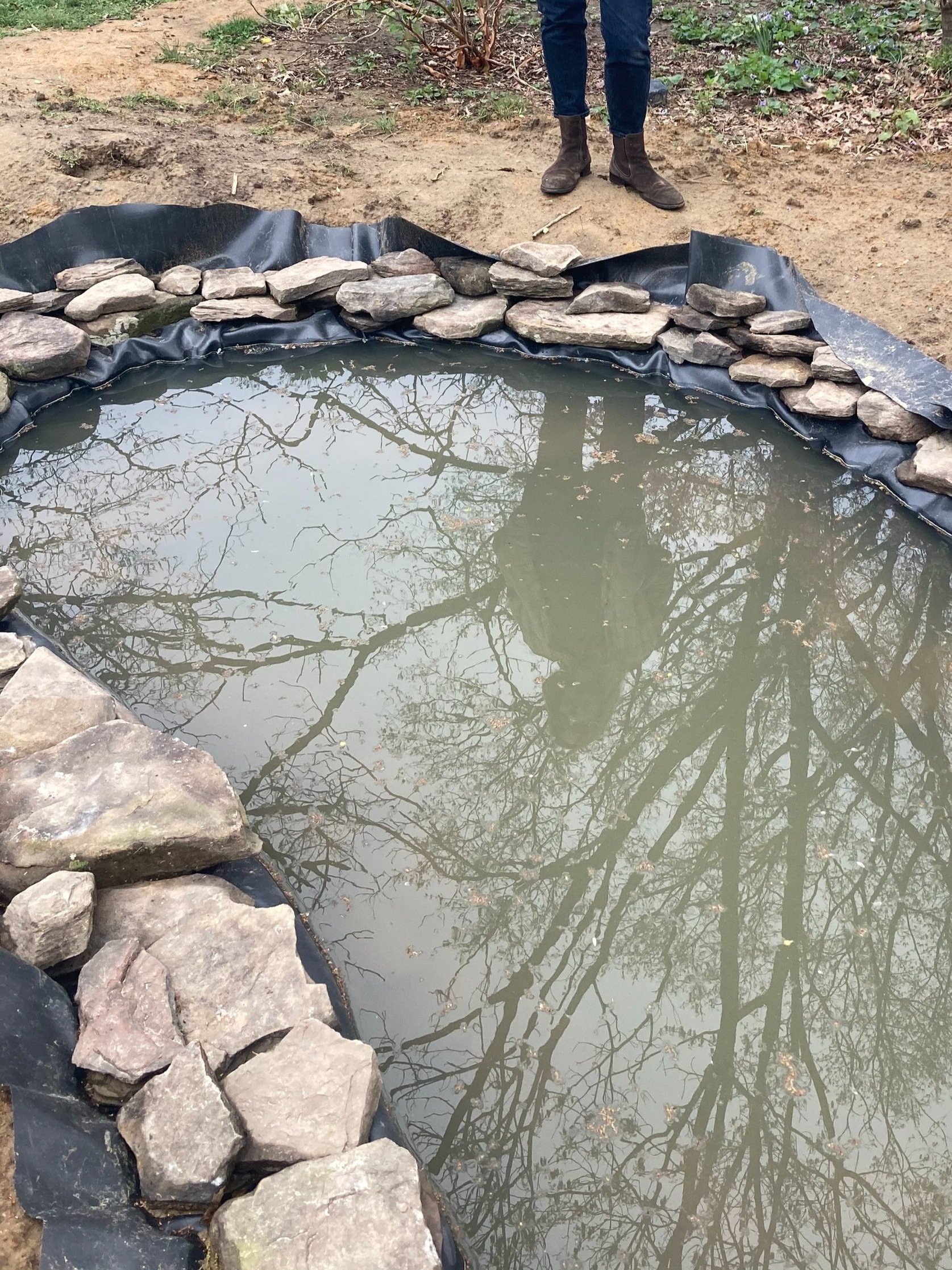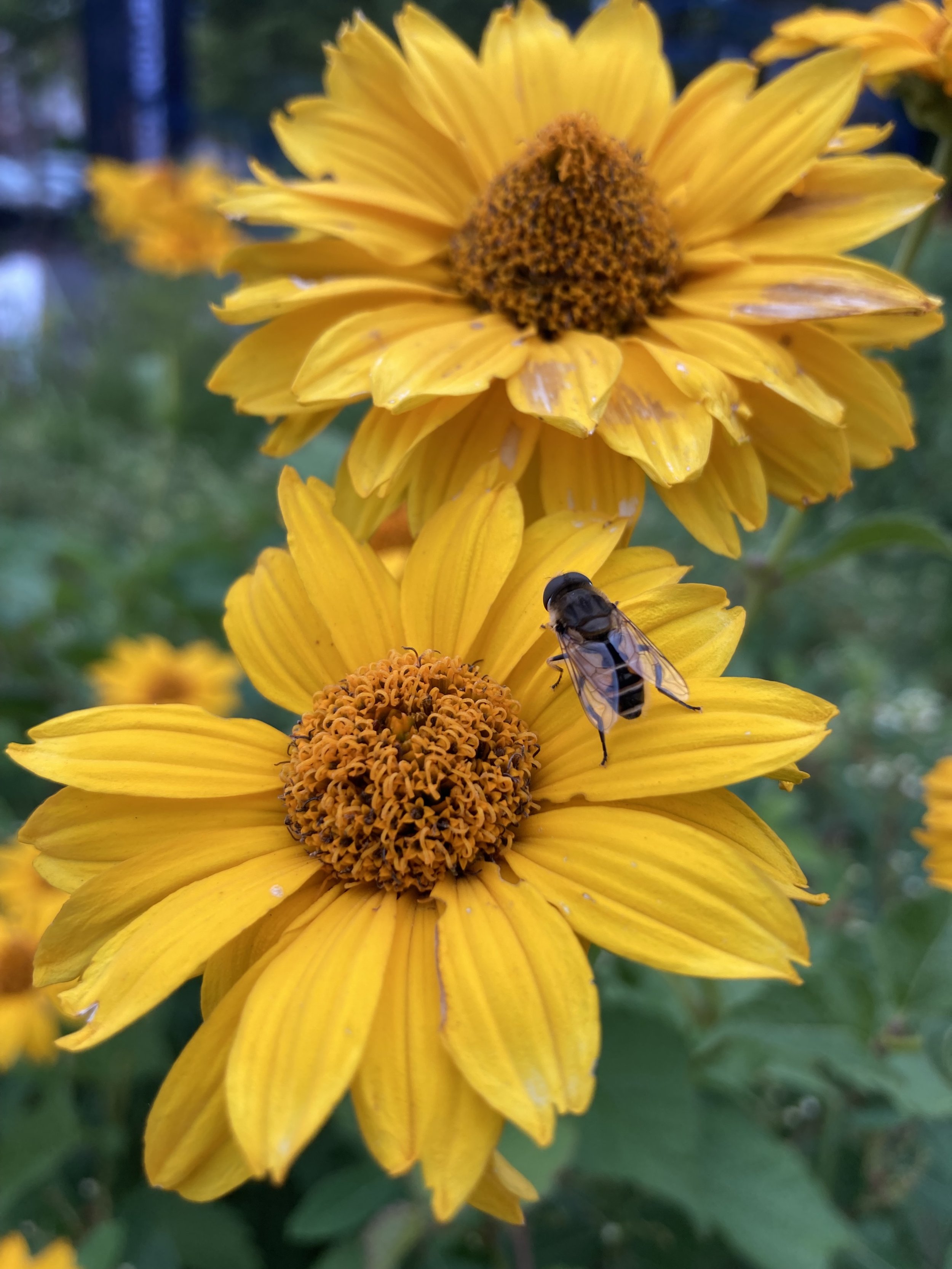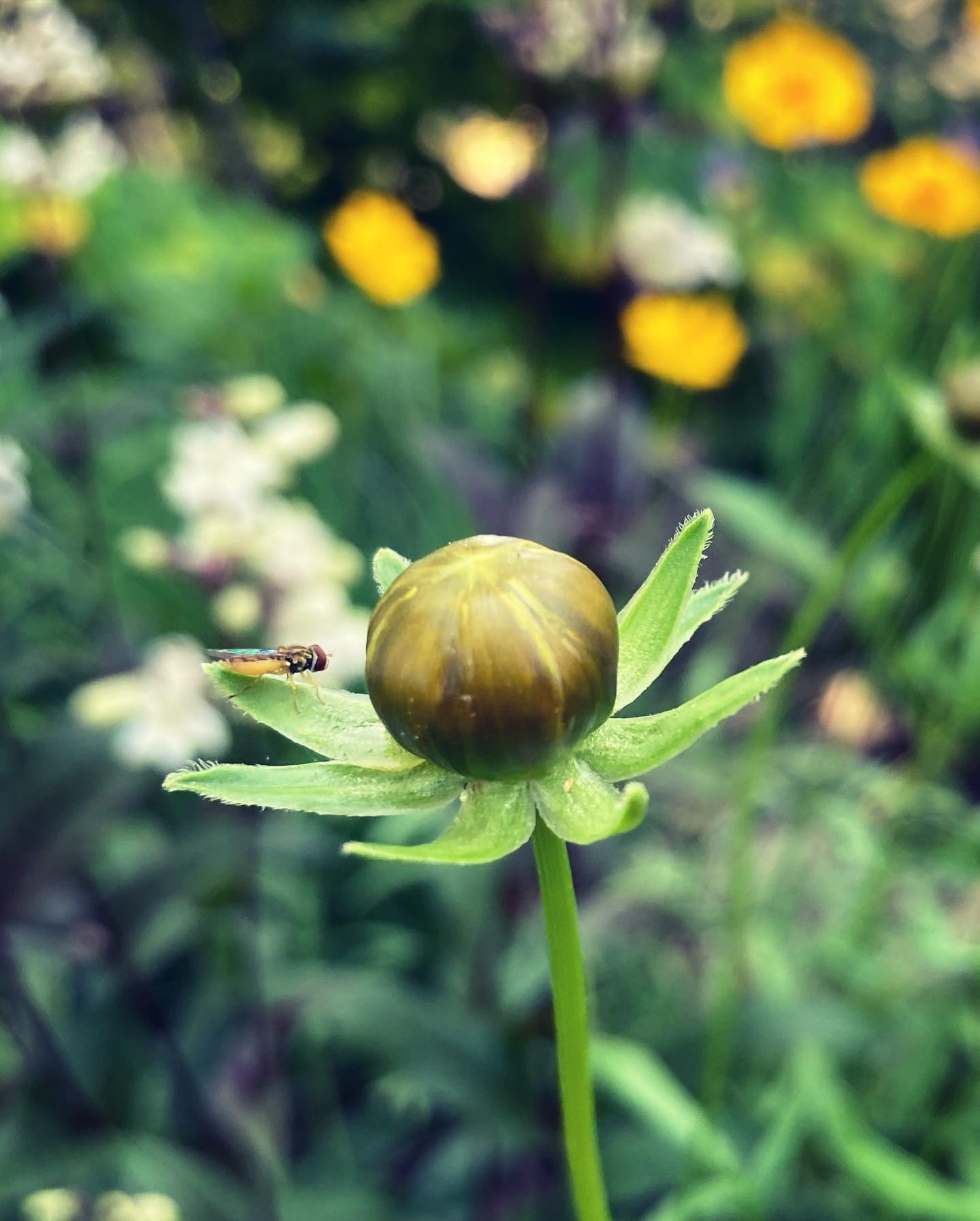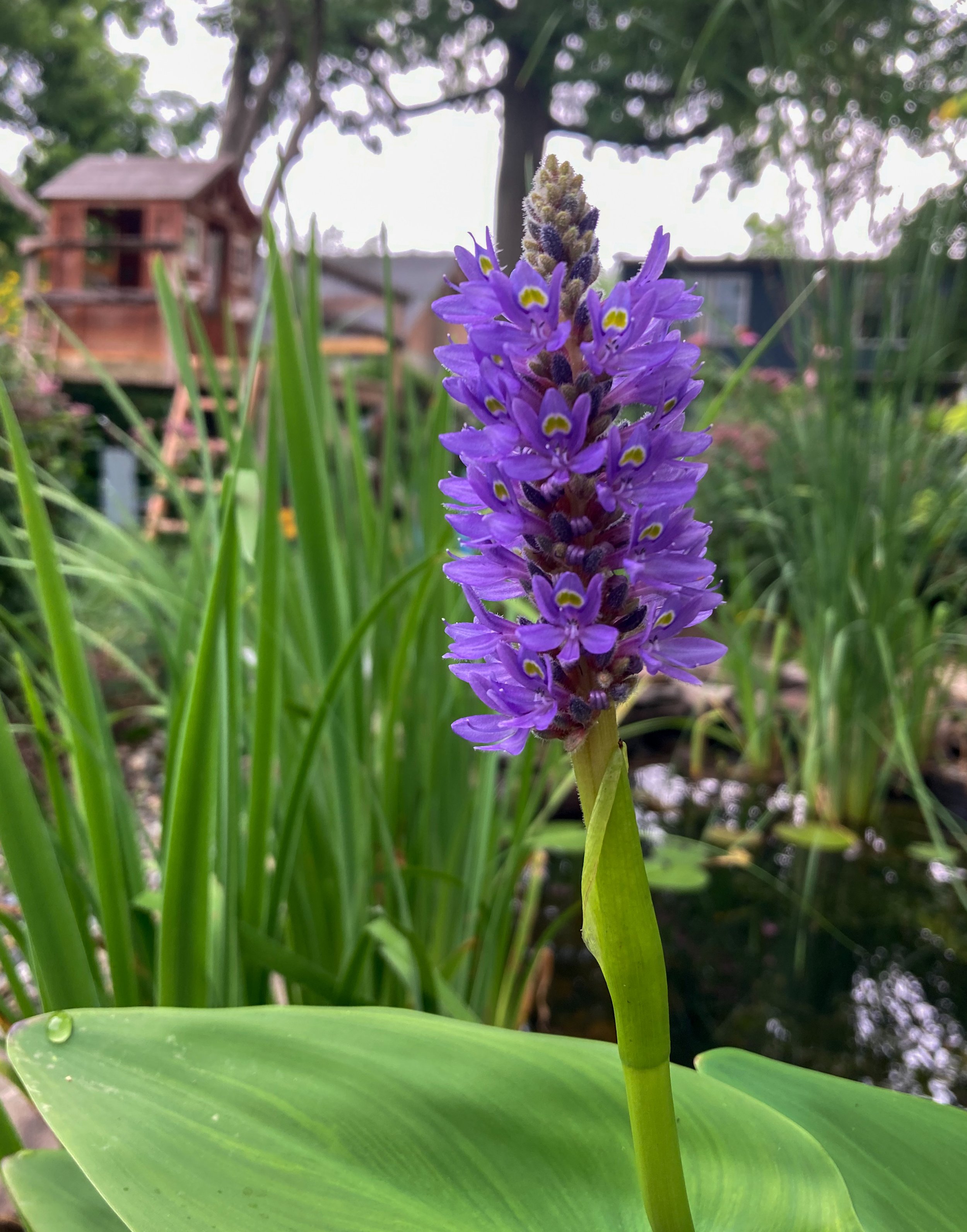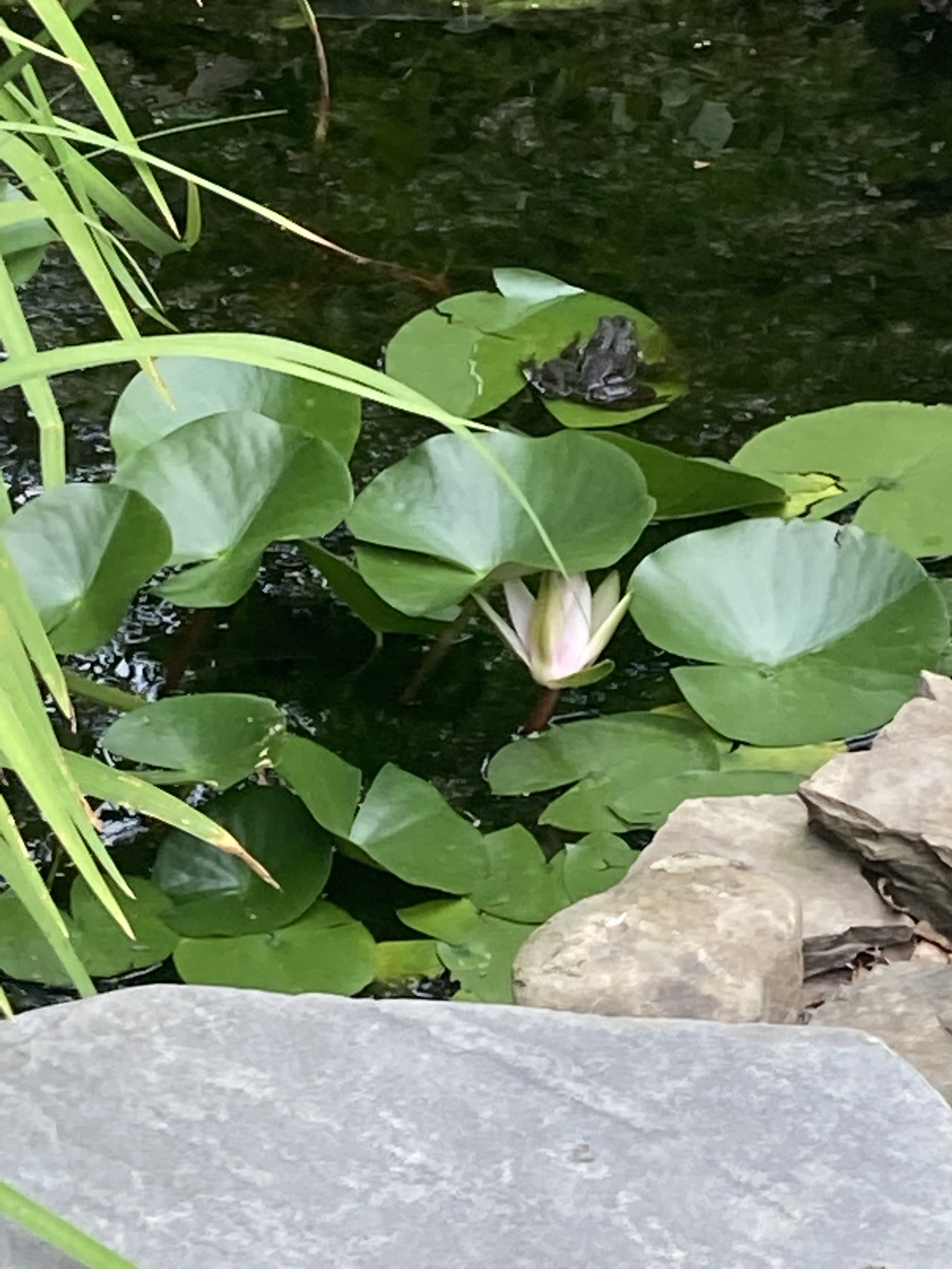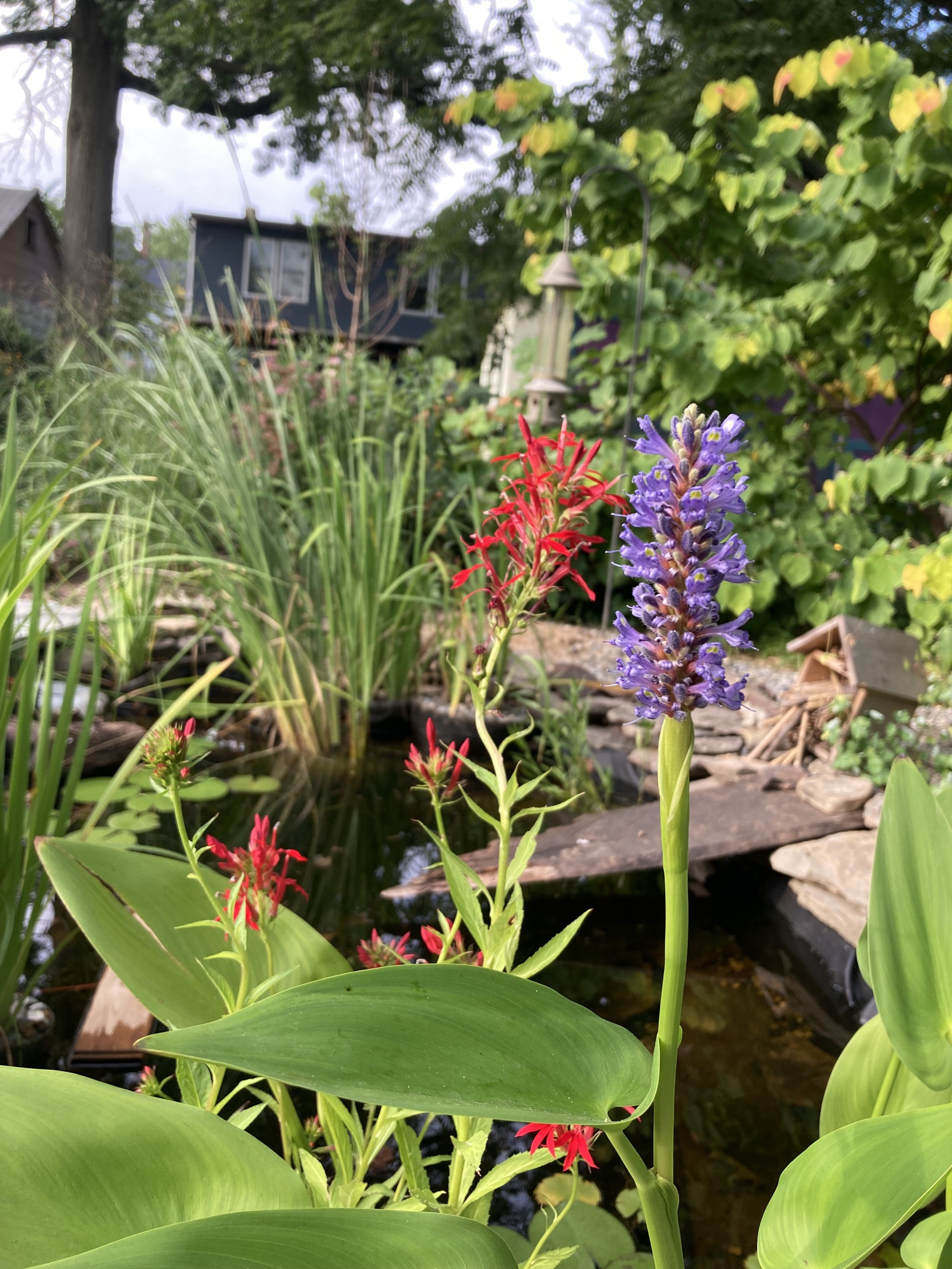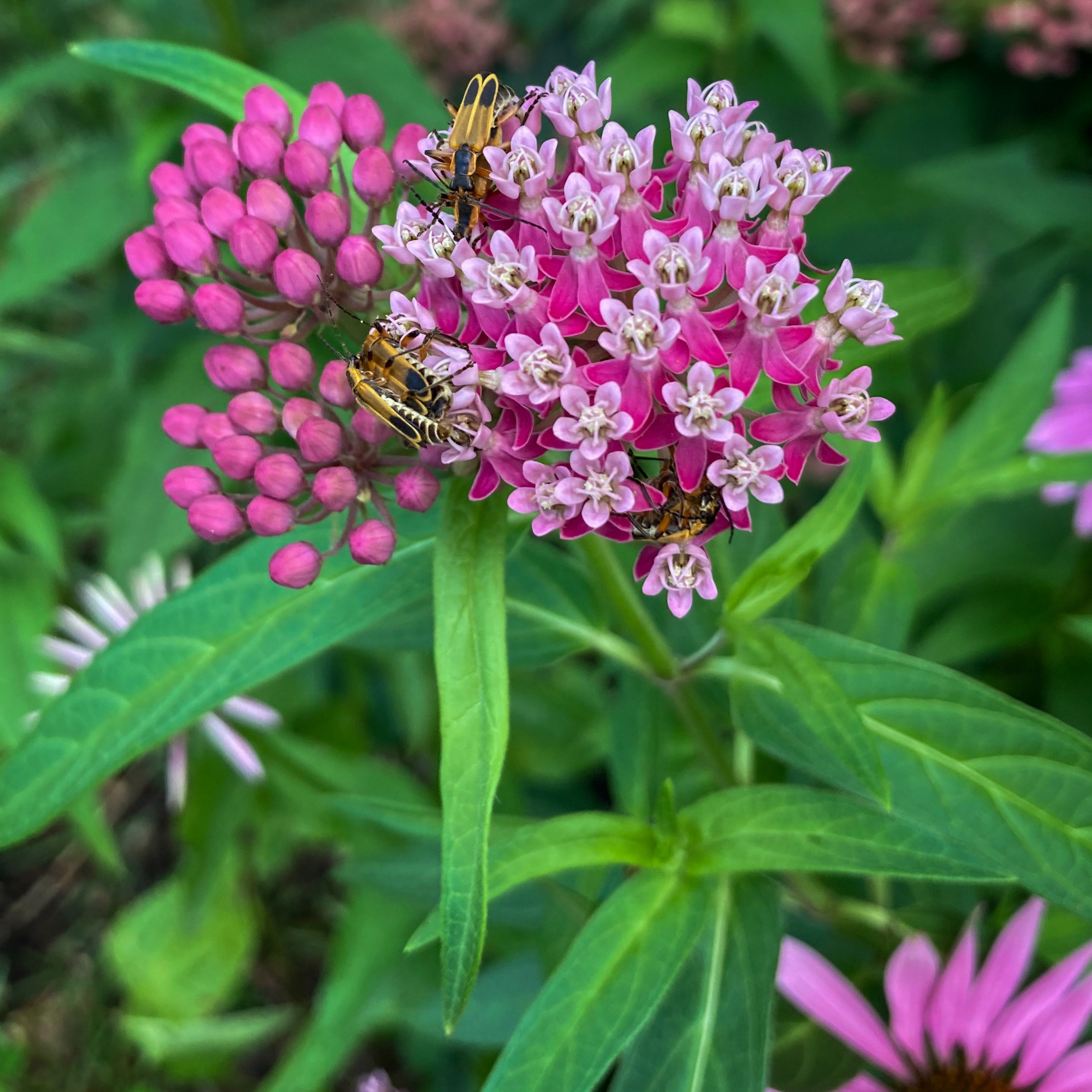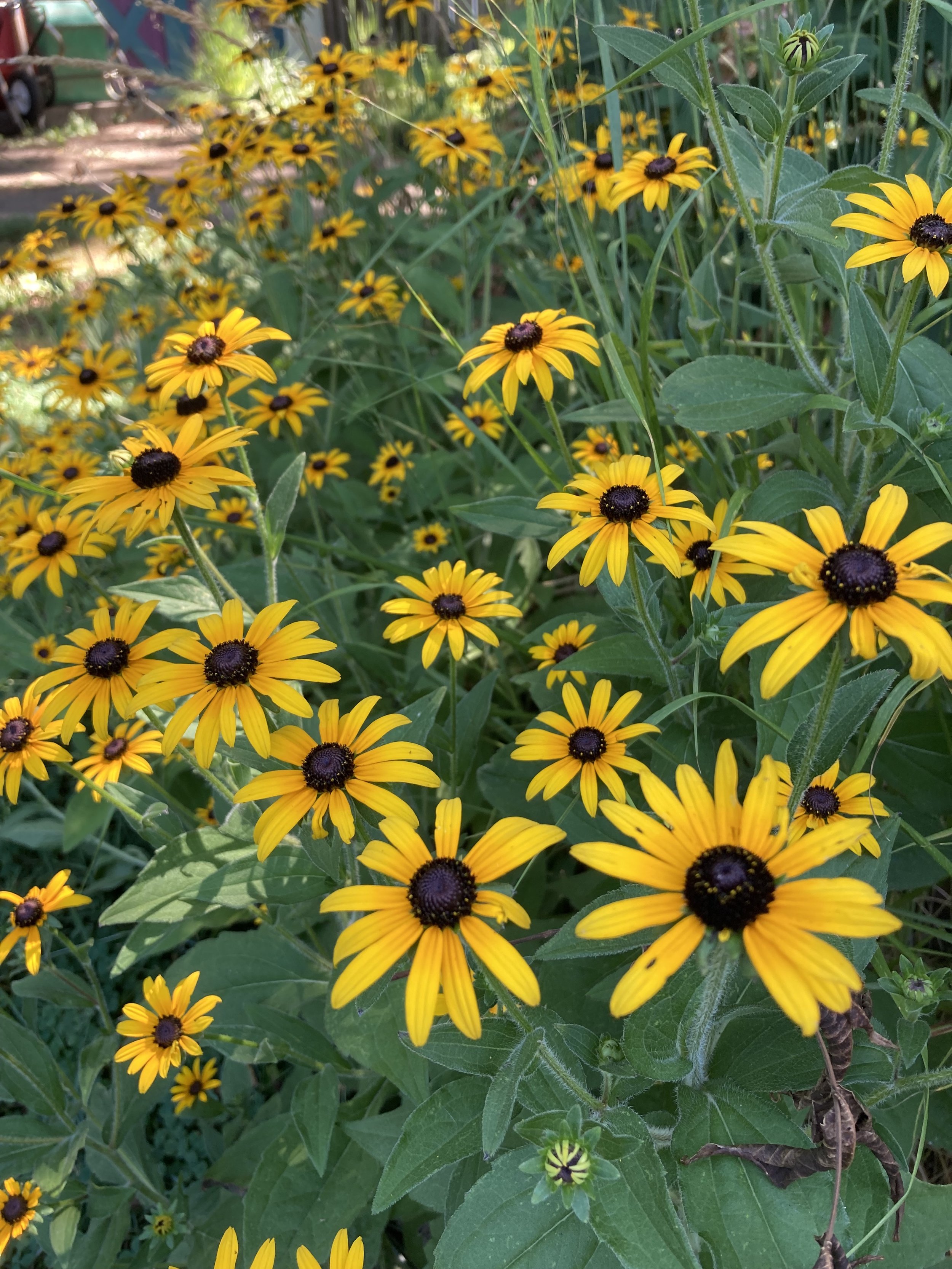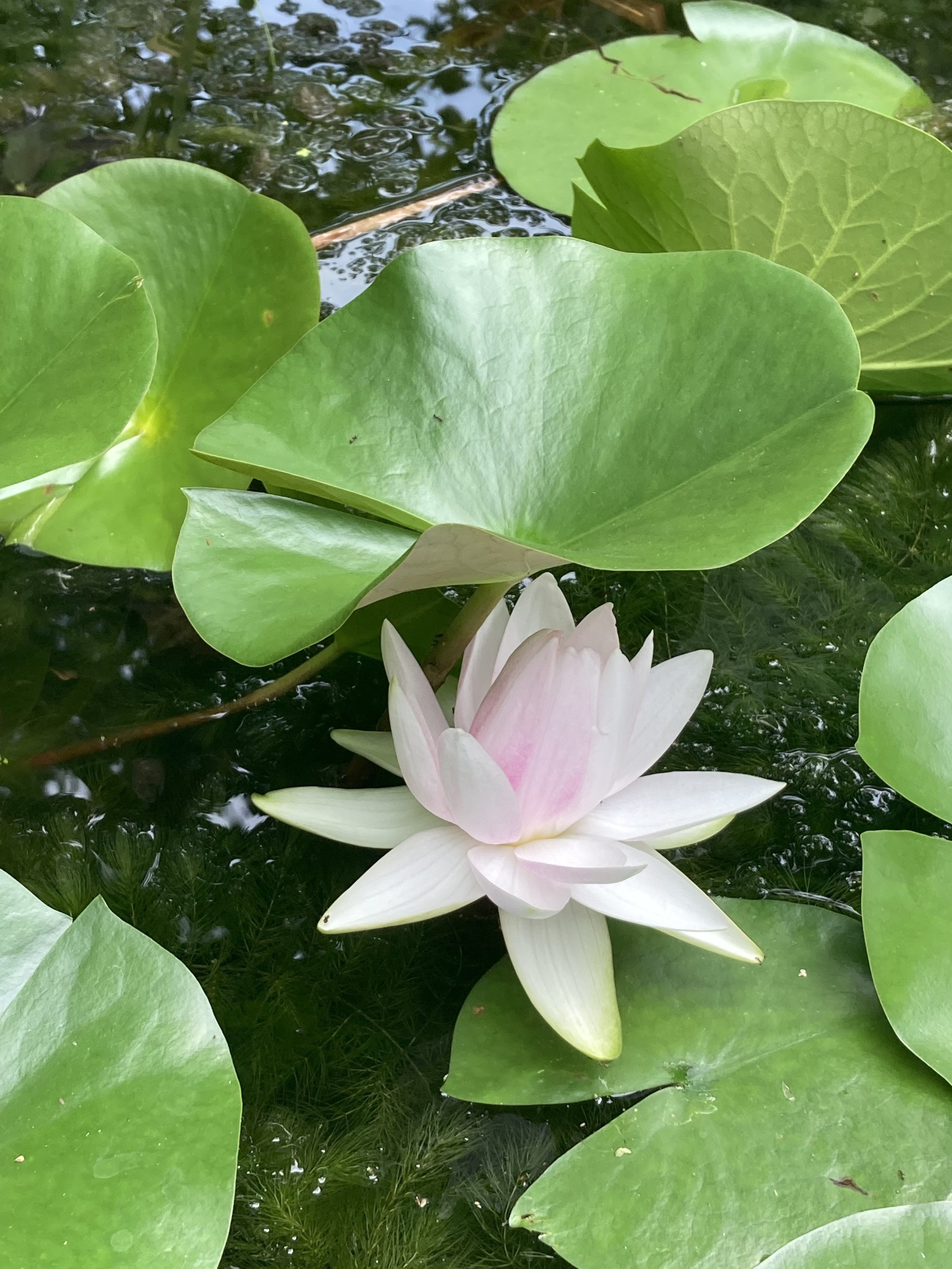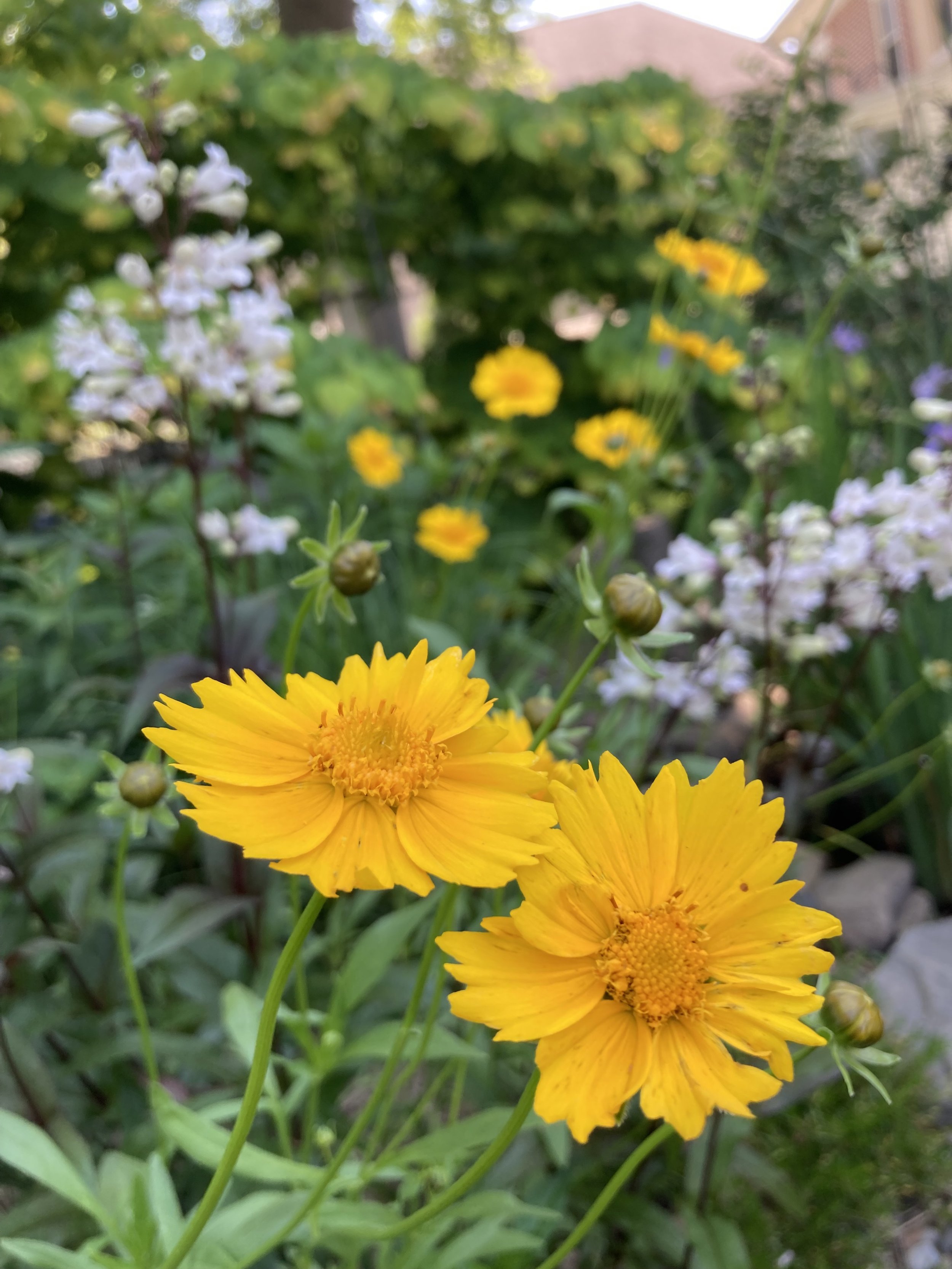The Wildlife Pond
Each year we tend to take on one bigger project here outside our home, typically tackling an area that is mostly lifeless — an area that still has turf grass. During the kids’ spring break in 2021, this project was putting in a wildlife pond.
Creating the pond was a labor of love for sure, and as with most things, has led to both joy and frustration with unexpected and endless lessons learned. Though many of you have heard bits and pieces about this project, it’s been difficult to make the time to write it down until now.
If you’re considering a wildlife pond, I hope you find this helpful. I tried to be thorough, but wouldn’t title this “Everything You Need to Know about Wildlife Ponds,” because I’ll never know everything. The beauty of doing something like this yourself or with your trusted helpers at home is that it’s a deeper opportunity to learn.
I hope this gives a little push to someone out there considering adding a water feature beyond the minimum, a bird bath. If that person is you, you won’t regret it. So let’s get into it.
When I set out to create the pond, my intentions were fairly simple:
Replace more lawn with something better
Invite more wildlife, specifically frogs and dragonflies
Deliver better on our promise of a true habitat by going bigger than a bird bath, because we have the space to do so
Keep it as natural as possible, knowing my creating it and using a rubber liner is unnatural (no tadpole-swallowing pumps, etc.)
One perspective of our wildlife pond, with Rudbeckia fulgida blooming.
Planning the Pond
After lots of Internet searches, hours of reading, a little debate with Tim, helpful advice from the knowledgeable and generous owner of Good Host Plants, and countless interludes into image galleries of the expansive dreamy, pond-like natural pools that are “big in Europe” (a phrase I’ve unfortunately repeated 1,000x), I got to work on our much smaller one here in South Jersey.
Here are the pretty simple first steps I took before the digging started:
Chose an area close enough to the house that we’d be able to observe it from the windows — an embarrassing human-centric approach to a wildlife pond, but not one I regret. I’ve spent hours gazing out at the pond, observing. birds, dragonflies, chipmunks, squirrels, frogs, and new plant growth. It was a win for my mental health.
Sketched my vision for the pond, complete with rocks and specific plant species that would surround it. Because I also enjoy painting and liked an excuse to practice watercolors, I even added color.
Decided on a list of oxygen-boosting native pond plants using the usual plant databases as well as this wonderful resource, “Native Pond Species of Southern New Jersey,” published by Citizens United to Protect the Maurice River and Tributaries.
Used a hose to test some different shapes and sizes for the pond, leaving it out there for some days to give us a chance to think about it, debate nitty gritty specifics, and check out the view from different windows. I landed on a lima bean shape.
Checked and rechecked my measurements to ensure that the pond would have enough space for “shelves” and a deep enough center so that tadpoles wouldn’t freeze to death in the winter (3 feet deep). If we did this again, I would probably change my strategy and design a gradual slope.
Note: When thinking about your shelves and the total size of your pond, look for Pond Plant diagrams like the one shown here can help you plan the right depth for each step: Plant Marginal Pond PlantsCalled garden centers and carted the family around to many of them, desperately searching for native pond plants. It was a dismal experience, though I did end up finding a couple of them at Haines Garden Center on Route 130.
Digging the Pond
Then, because I heard the kids telling the neighbors “Mommy is putting in a frog pond!”, and because I’d ordered the gravel and rubber pond liner, and because Tim was totally on board with getting rid of more lawn but still slightly skeptical of my plan… I got to work digging.
The digging was great exercise and mostly enjoyable. It helped that it was early spring and therefore not hot. The biggest challenges during this phase were making sure I wasn’t digging into any big tree roots, second guessing my design, and maintaining the shelves when I got tired and sloppy. I still wish I had made it slightly bigger with more space for the marginal pond plants.
It’s hard to imagine how much soil will come up it is until you start digging. This was the source of Tim’s main concern, which was warranted. However, my extremely loose plan worked out: We piled the dirt up around the pond area, smothering more grass to create additional beds and a little height surrounding the pond so that it would be a more protected space for its littlest visitors.
After we lined the pond with a few cut-up old rugs and then liner, we surrounded it with larger rocks and, gravel including a little path.
Filling the pond took a few days, because we connected the hose to the rain barrel for the best result. (This is not something we could have done as quickly if we’d started the pond in the summer. I highly recommend putting a pond in during the fall or early spring to take advantage of regular rain fall.)
Here are all of the steps of the digging and filling phase broken down:
Dig gently around the edge first so that I could remove the hose outline.
Focus on the center of the pond, using a stick to measure the depth to ensure that it was at least 3’, the recommended depth for ensuring it doesn’t totally freeze in the winter. (Again, if doing this again, I’d make this deepest area bigger. I’d make it all bigger.)
Carefully work from the outside in, measuring “steps” or shelves and to make sure they are about the right depths for the plant types.
Lay old carpets (some of the junk that came with our house) across the sand to protect the liner from rocks and other things that could cause a leak, and then add the rubber liner. The liner is super heavy, so it takes a litlte while to complete this step.
Lay bigger rocks around the edges, both for eventual wildlife and to keep the liner down.
Pour some gravel in the center.
Connect your hose to the rain barrel (important not to use regular city water from the hose if possible) and fill.
Adding the Plants
Native plants are key to a wildlife pond, of course. When selecting marginal pond plants, pay attention to the depth of your shelves. I really struggled with this step, because I wanted a very natural look and found it difficult to hide the containers — next year I might adjust the pots to wider and shallower ones, though the roots are already well established and go through the water-friendly soft sided containers, so it’ll be challenging. It’s also really important to not introduce invasive species. If you’re even here on our site, you likely know this. But I will say it’s a lot more difficult to find pond plants that are not, so just stay aware. And if someone at a garden center tells you “Well, they are contained in your pond,” that’s not true. The seeds can be dispersed in the wind or by birds.
Here is what we ended up with as our selection of pond plants:
Floating Oxygenating Pond Plant
Coon’s tail Ceratophyllum demersum - This stuff really takes off! I pulled out some old brown plants with the net early on, and then worried this wouldn’t come back.
Fully Submerged Plants
White Water Lily - We found it impossible to locate a confirmed/guaranteed native white pond lily, but because this plant was critical for shelter and I settled on a vaguely labeled “Alaskan white lily” from somewhere. If I do find straight species native, I’ll add it, but the flower on this one is absolutely beautiful.
Marginal Plants
Blue Flag Iris - Iris versicolor - Elicits pure JOY when it blooms early on, because these irises are just so beautiful. Plus, they attract hummingbirds. A must, really. I had tried to force these into an area that pooled water in the front of our house, but it didn’t work. They love sitting right in the water of the pond.
Scouringrush horsetail Equisetum hyemale - I put this in a soft pond plant container, and placed it beside where the cattails and some of the iris are.
Pickerelweed Pontederia cordata - One of my favorite additions! It blooms for a long time, is always abuzz with pollinators, and just when you think it’s done, there’s another bloom. Attracts birds and dragonflies and damselflies.
Cardinal Flower Lobelia cardinalis - This bloomed nicely the first year, but then didn’t come back this year. I’ll plant more, because of course they are gorgeous and beneficial, attracting a range of pollinators that includes hummingbirds.
Deep Marginal Plant
Cattail - Typha latifolia - Wes and I waited and waited for the cattail to bloom last year, but it never did. It was in the deepest part of the pond, and did thrive — but it wasn’t until this year that we saw the first of the flowers and distinctive seed heads.
Bordering Plants
Though I was excited about the possibility of moisture-loving plants like marsh marigold and cinnamon fern, I quickly realized my naivete in thinking moisture-loving plants would survive there. The soil is our typical dry-ish clay soil, and due to the liner it’s disconnected from the “hydrology” of the pond (real ponds have high water tables around them). And we’ve never had enough rain to overflow. In fact, it’s more likely this summer for the water to look too low.
Instead, we focused on plants that would follow our usual principles of multiple layers, successional blooms, hosts to and nectar for several species. Native grasses are especially great for around the pond because dragonflies, damselflies and lightning bugs love them.
Switchgrass - Panicum virgatum ‘Shenandoah’ - we used this shorter cultivar so as not to block views of the pond.
Purple Coneflowers - Echinacea purpurea
And in the shade under the redbud, viburnums, and serviceberry:
Pennsylvania Sedge
Clustered Mountainmint - Pycnanthemum muticum
Woodland Phlox - Phlox divaricata
Wild Geranium - Geranium maculatum
Low Woodland Sedge - Carex socialis
This collection of plants act as larval hosts to over a hundred caterpillars of moths and butterflies, feed native bees, and provide shelter for frogs and chipmunks, food for birds, and serve countless other beneficial insects.
Putting in the pond made it easier for us to replace more grass with all of the above, because the water itself added structure - basically a focal point - and was fun to design around.
A bullfrog checking out its new home.
Joys
On a difficulty scale of 0-10, I wouldn’t call this a 2 for the typical home gardener but it also was totally manageable. And I take pride in it every day I look outside, and see less grass and more life.
The many beneficial beings it has made space for in our backyard is the main source of our joy though. I’ll talk fully about the frogs in my next post, but there are always insects on the water (no, not talking about mosquitoes), butterflies, moths, bees, flies, and others visiting the plants. It feels good to go beyond the bare minimum for our habitat certification as well.
The dragonflies and damselflies in particular are thrilling for me to see every damn time. I wish I was a better wildlife photographer so I could show you all. They vary in size and color and, of course, they eat mosquitoes.
A chipmunk dug little entryways to their home down below just in front of a patch of moss phlox and since we expanded the garden and added some taller plants around the pond, he or she has become a much more frequent visitor, clearly feeling a bit safer knowing there are more places to hide.
The birds love hopping down onto lower rocks to drink from the pond after munching the seeds of the echinacea and rudbeckia.
And when I’m stressed out or simply just thinking, the pond has become a focal point for me too. I love it, even when I question some of the decisions made when creating it. Water, helping the little ones, and seeing the results of hard work will all do a lot to calm the soul.
Realities + Regrets
The pond attracts more wildlife, and with that, sometimes there are some sad little situations, like finding a young bird that must have fallen in before it was totally confident with its wings. We’ve added more areas where birds can enter gradually but it has still happened, so I’d like to keep doing more.
Once very early this spring I found a couple of green frogs dead and laying together on a rock like some sort of sacrificial scene. That was rough. I’ll never know exactly what happened, but it could have been raccoons or cats or who knows what else.
One of our biggest concerns with the pond was that it might attract cats — outdoor cats are so incredibly bad for our environment and cats can be drawn to water — but so far it hasn’t been bad. I’d say about the same amount of shooing away since before it went in. I’m not sure what happens, of course, when it’s dark and we’re asleep.
Evolutions
Since we first put the pond in, we’ve been adding branches and rocks around it to create better habitat and ensure that birds and frogs are supported whether perched for a drink or trying to hide. I’m always looking for nice branches out on people’s curb strips to carry back and use around the pond or elsewhere, as eventually they break down and need to be replaced.
I’ll always question the rubber liner, though we did spring for the good stuff to be as safe as possible. I just wish I was planting straight into the earth, but I’m still not sure how we could have made that work with the actual hydrology of our backyard.
The rocks are probably the least sustainable thing about this project. Rocks have to come from somewhere when you’re out here on the coastal plain with no local stock to access, and that’s a thought that worries me when I think about it too much. But they are necessary and aesthetically pleasing, so we’ve added more since that first year.
So what do you think? Do you have a pond? Would you like to add one? Never hesitate to reach out to us to share your photos or ask questions!
In my next post, I’ll get a little more philosophical about the pond and its inhabitants. Look for that soon.


